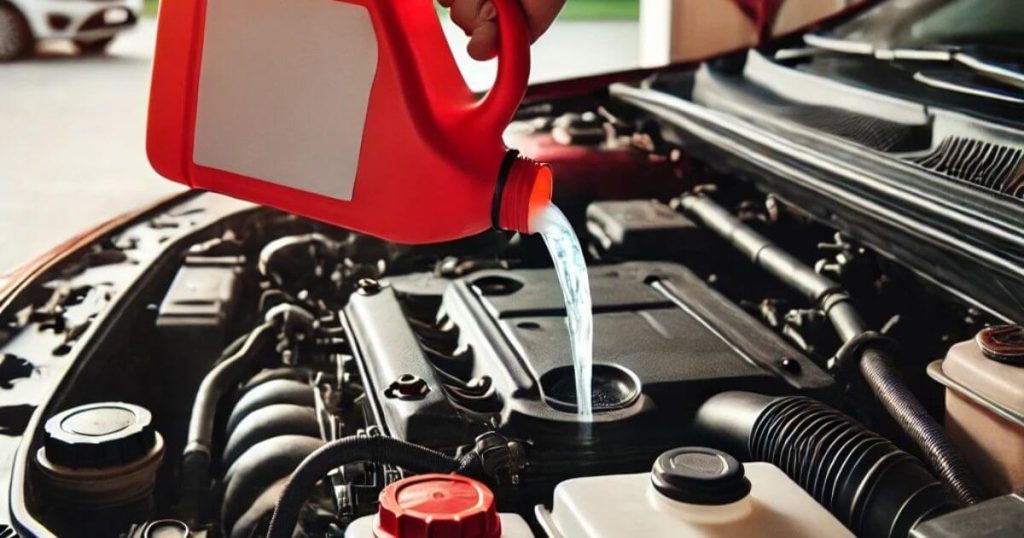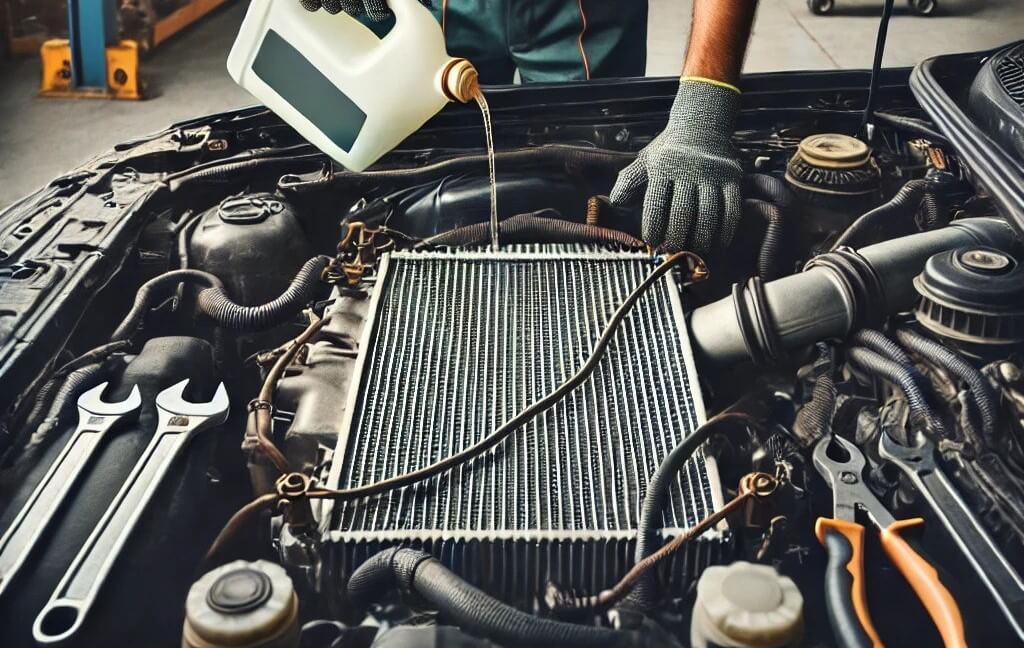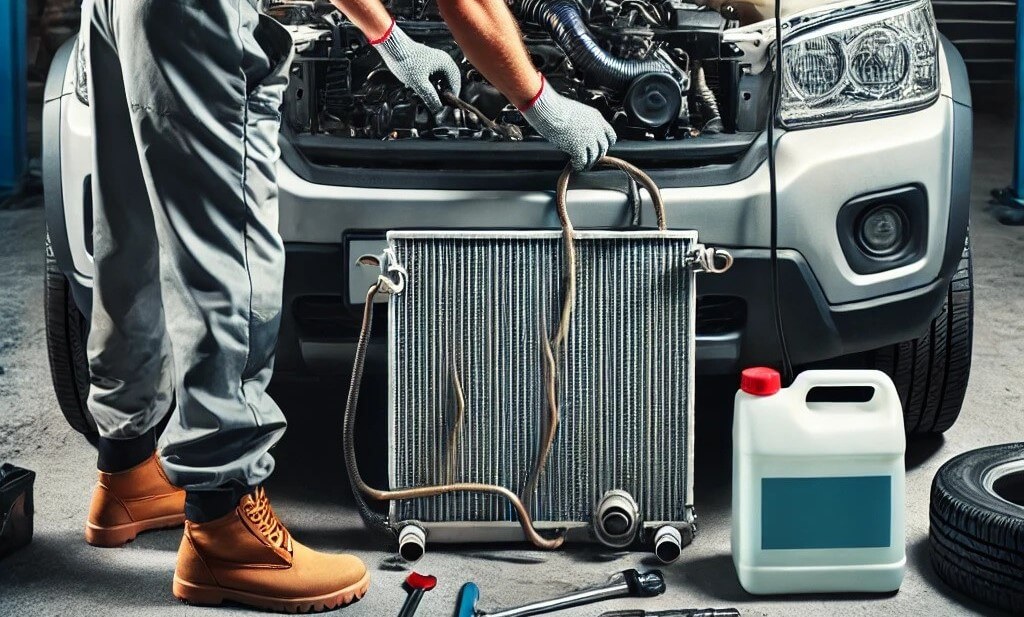This article was updated in February 20, 2025 with new products and information by Mark S. Taylor
During a lovely day, I drove my car to a friend’s house. But at some point, I saw steam from the hood of my car and I started worrying about the situation as I was terrified. I managed to pull the car over and turn off the ignition without any issue.
I recall once my father talked about overheating situations in cars and the possible reason was the coolant level being low in the car. This made me think whether I should check it out myself.
To start with the process, I learned from my experience that the car’s engine needs a rest so that it can cool down. It takes me around 30 minutes in normal conditions. The reason is that changing the radiator cap on a hot engine is risky.
While I was waiting, I was reminiscing the fun day out with a friend that I planned, though it’s a bit tricky. But I made up my mind to resolve the issue.
Once the engine was cold, I pushed the hood upwards. As the front part of the engine has the radiator cap, I saw it which I twisted out clockwise with the help of a cloth and then removed it.
To my surprise, I was able to use my knowledge and witness how the coolant level in my car was low. That alone deserved to make me proud.

There was some coolant in my trunk which my dad taught me to mix with water. I had a funnel and I poured the mixture into the bonnet until it was full.
Now, let’s see if the coolant reservoir is filled. The translucent plastic reservoir is located close to the radiator. It also required more coolant so I filled it up to the maximum limit.
I properly closed the radiator cap. Next, I cranked the engine for a little while and watched the needle indicating the temperature to ensure that it remained in normal range.
Seemed like everything had settled, and I was happy that it worked the way I wanted. I got back to my friend’s house comfortably as I now felt confident regarding handling my car.
For me, this was an eye opener for the performance of the car, in fact whenever I work with my car, I will always keep an eye on the coolant. It also showed me that I am competent to solve a few problems with the car.
Tips I Learned:
- First of all I would advise opening the radiator cap, always let the engine cool first.
- Tell your friends to stock up on extra coolants; you never know when you need it.
- Make sure you check the level of coolant at the time of fueling; it helps to avoid overheating.
- Always remember the coolant has to be diluted with water, make sure to read instructions on the coolant bottle.
- By using the funnel, the coolant can be poured without the risk of spillage.
Contents
Understanding Radiator Fluid
An engine continuously generates heat. Radiator fluid is also known as coolant because this is its primary job – taking the heat away from the engine and circulating the water around till it reaches the radiator, from where it dissipates the heat. It essentially ensures that the engine does not cassette in situations where surrounding temperature is quite high nor allows it to freeze in extreme cold temperatures. At other times, it is critical to ensure that the correct type and concentration of coolant is deployed to ensure the vehicle runs smoothly.
Safety Precautions Before Adding Radiator Fluid
Before you start, there are some safety steps that should be followed:
Cool Engine: Steam or fluid may be hot which can cause burns, hence make sure that absolutively no heat is present before proceeding with the radiator.
Protective Clothing: In order to prevent spills, put on gloves and safety glasses.
Proper Airflow: Perform this task in a strategically ventilated room so that fumes are not breathed in.

Choosing the Right Radiator Fluid for your Car
Choosing the right radiator fluid for your vehicle is very important. Always refer to your vehicle owner’s manual and it will state the proper coolant for your vehicle. Long story short, there are two variants:
Inorganic acid technology (IAT) – This coolant is generally green and made for older vehicles.
Organic acid technology (OAT) – This coolant is generally a yellow orange and is suitable for cars that are newer in age.
Finding the location of the Coolant Reservoir and Radiator.
If you want to pour the cooling liquid into the car, first of all, you will have to find the car’s radiator as well its coolant reservoir.
Radiator: It usually sits at the front of the engine and is almost always placed centrally behind the grill.
Coolant Reservoir: This comes in the form of a plastic container with minimum and maximum points. It is often connected to the radiator
Steps to Add Radiator Fluid
Basic Steps to Follow Pouring Water into the Car
Engine Coolant System Check : Before you proceed with the process, ensure the car is parked on a flat surface.
Car Engine-Off: While performing the replacement the engine has to be turned off and cooled off completely.
Check the Engine Compartment for the Top : You should easily be able to find the radiator cap as it is located at the middle front of the engine compartment.
Unscrew The Top: With a towel on the cap, hold it with the left hand and turn its outer ring clockwise and with the right hand hold the outer ring of the cap.
Check the coolant volume before pouring the liquid inside: Pour the radiator fluid before proceeding to check the existing volume of the fluid.
Diluting the concentrate with the pure water: Add distilled water in line with the manufacturer’s instructions if you’re using concentrated solution.
Begin pouring: While fastening the radiator with the funnel closely pour the coolant in a slow pace till the radiator reaches its maximum level.
Filling the coolant Reservoir: Do not cross the marked line when your filling in the coolant liquid inside the reservoir.
Screw the radiator cap back on: Properly seal all caps when you’re done pouring.
Run the Engine: Start the engine and warm it up for a few minutes to allow the new coolant liquid temperature equalizer to spread in the system.
Check for Leaks: Check visually the area around the radiator and also the bottom of the car looking for leaking fluid.

Taking Care of Car’s Cooling System
Cooling system of the car should be serviced at regular intervals. Hot weather will cause overheating in the engine if the coolant system is not working correctly. Here are some tips to keep it in top condition:
Engine Checkup: Check levels of coolant every month preferably before going for long drives.
Fluid Replacement: Adhere to your manufacturer recommendations concerning fluid replacement which usually occurs after 30,000-50,000 miles.
Look For More Complex Signs: Look for chances of overheat, leaks or best engine temperature and fix them immediately after they appear in the vehicle.
What Not to Add While Putting Radiator Fluid
Do not make these basic mistakes while topping up the radiator fluid:
- Opening A Hot Radiator: Do not twist the radiator cap while the engine is hot to avoid severe injury.
- Use Correct Vehicle Coolants: Always use the appropriate suggestions of vehicle coolant fluids, rather than using universal kinds.
- Overfilling: Don’t fill the radiator or reservoir to the brim as coolant expands when it is heated.
Frequently Asked Questions
How much time gap is required between coolant level checks?
The coolant level is preferably checked atleast once a month. It should also be checked before going for long travels and this is advisable. Touching such preventive measures can help avoid overheating and damage to the engine.
If things get dire, can I use water instead of using a coolant?
Water absolutely can be used to top off the radiator in the case of an emergency but limit it to just that. This is how a temporary solution looks like. The right type of coolant is always better than using water which replaces the functional mixture and this is due to the fact that coolants have additives that prevent rusting and boiling off.
What to do if the car does not cool off with the addition of a coolant?
If after adding coolant the car still seems to be functioning at higher than normal temperatures, there can be an underlying issue due to which the vehicle will behave the way it does. A thermostat damage or a leakage in the cooling system can be the reason. Take the vehicle to a certified mechanic as they possess the equipment to detect the problem and aid in removing it as well.
Is it something to worry about if the coolant binnacle depicts a lower level than normal after some time has passed?
There is a treatment out there due to which a coolant vessel can be witnessed at a lower level, evaporation. But if the level plunges all of a sudden or it is quite deep, chances are of a recuring or even an established leakage in the cooling system. But one must waste no time in addressing the pressing issue, as you can lose valuable time.
Can I mix different types of coolant?
In general, it is not a good idea to mix different coolant types as this may initiate a hostile chemical reaction which is possible to damage the cooling system. The manufacturer’s instructions regarding the coolant type should always be adhered to.
Why is my coolant reservoir empty but the radiator is full?
In cases where the radiator is full and the coolant reservoir is empty, this is a clear indication of a possible reservoir and hoses leak. In such a situation, a system check for any leaks is recommended before repairing. This is also to ensure that the level of the coolant is maintained at an optimal level.
Conclusion: It is advisable to constantly check and replenish the amount of radiator fluid in your car cooling system, this is crucial for the good functioning of the engine system. Following this guide enables you to add radiator fluid into your vehicle without worrying how the vehicle performance will be. Last but not least, safety is always the priority and so make sure to always work on a cool engine and have the right coolant for the vehicle in the first place.
